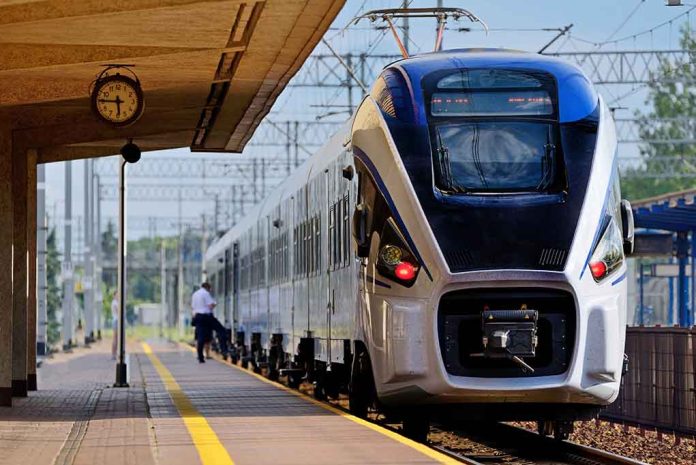
Japan unveils the world’s first 3D-printed train station, completing construction in just six hours and slashing costs by 50% compared to traditional methods.
Key Takeaways
- The Hatsushima Station in Japan’s Wakayama Prefecture is the world’s first 3D-printed railway station, built in just one week with assembly taking only 2-6 hours.
- The project is a collaboration between Serendix Corporation and West Japan Railway Company (JR West) to address Japan’s labor shortages and aging population challenges.
- The 3D-printed structure costs approximately half of what traditional construction would require while providing earthquake resistance similar to reinforced concrete houses.
- The station features local cultural symbols such as mandarin oranges embossed on its sides, maintaining community identity despite its modern construction.
- This innovation could revolutionize infrastructure maintenance in rural Japan, where declining populations make traditional construction methods increasingly uneconomical.
Revolutionary Construction in Rural Japan
West Japan Railway Company, also known as JR West, has introduced a groundbreaking solution to maintaining infrastructure in Japan’s declining rural communities. The Hatsushima Station in Wakayama Prefecture replaces a 75-year-old wooden structure with the world’s first 3D-printed train station. Serving approximately 530 riders daily with only one to three trains per hour, this small station demonstrates how advanced technology can address practical challenges in areas with shrinking populations. The new station’s dimensions stand at 2.6 meters tall, 6.3 meters wide, and 2.1 meters deep, providing about 10 square meters of functional space.
The station was manufactured at a factory by Serendix Corporation and then transported to its final location in Arida, Japan, where it was assembled overnight. This prefabricated approach drastically reduced on-site construction time compared to conventional building methods. The structure consists of mortar reinforced with steel and concrete, ensuring durability and safety despite its rapid assembly. Local residents have expressed both surprise and optimism about the innovative construction technique that has preserved their essential transportation infrastructure.Time and Cost Efficiency
The economic and practical advantages of 3D-printed infrastructure are significant in a country facing severe labor shortages. The entire construction process for Hatsushima Station’s foundations and exterior took only seven days, with the final assembly requiring just two to six hours. This represents a dramatic improvement over traditional construction timelines. Most importantly, the project cost approximately half what conventional building methods would have required, demonstrating the financial viability of this innovative approach for rural infrastructure maintenance.
JR West’s Naohiro Ohashi noted that using conventional methods, “it takes a month or two to build a roof and walls. We were able to install them in about two hours—so there is an advantage in terms of speed.”
The accelerated construction timeline brings particular value to railway operations, where service disruptions must be minimized. By completing the assembly overnight, JR West avoided significant service interruptions while updating critical infrastructure. Railway officials emphasize that the greatest advantage may be in reducing workforce requirements, a crucial benefit in Japan where an aging population has created persistent labor shortages across numerous industries, particularly in construction and maintenance sectors.
Structural Integrity and Local Identity
Despite its rapid construction, the new Hatsushima Station doesn’t compromise on safety or durability. The structure offers “earthquake resistance similar to that of reinforced concrete houses,” according to West Japan Railway officials. This resilience is essential in Japan, where seismic activity presents ongoing challenges for infrastructure design. The reinforced mortar construction provides protection from the elements while ensuring passenger safety comparable to traditionally built structures.
“I hope that they can make more buildings with 3D-printing technology. Watching it, the work is progressing at a speed that would be impossible with normal construction,” said Yui Nishino, a 19 year old university student.
The design cleverly incorporates local cultural elements, with mandarin oranges and scabbardfish embossed on the station’s sides. These symbols of local pride and industry demonstrate that technological innovation needn’t come at the expense of community identity. The smaller footprint of the new station reflects the practical reality of declining ridership while maintaining essential services for the community. This combination of practical efficiency and cultural sensitivity illustrates how modern solutions can be implemented without erasing local character.
Blueprint for Future Infrastructure
The Hatsushima Station project represents more than just a single innovative building; it provides a potential template for addressing Japan’s infrastructure challenges nationwide. With an aging population and declining rural communities, maintaining extensive railway networks becomes increasingly difficult using traditional construction methods and labor forces. JR West officials view this project as significant primarily because it dramatically reduces the workforce required for construction and maintenance, a critical factor in Japan’s demographic reality.
This approach aligns with global trends in 3D printing for construction, with notable projects already underway in France and the United States. The technology offers solutions for labor shortages, cost control, and environmental sustainability by reducing waste and optimizing material usage. For Japan’s extensive railway network, particularly in depopulating rural areas, this innovation could provide a sustainable path forward for maintaining critical transportation infrastructure despite demographic and economic challenges.
Sources:
- https://www.sustainability-times.com/sustainable-business/as-fast-as-a-lightning-bolt-this-historic-3d-printed-rail-station-is-redefining-urban-engineering-forever/
- https://arstechnica.com/gadgets/2025/04/japanese-railway-shelter-replaced-in-less-than-6-hours-by-3d-printed-model/
- https://www.nytimes.com/2025/04/08/world/asia/japan-3d-station.html










